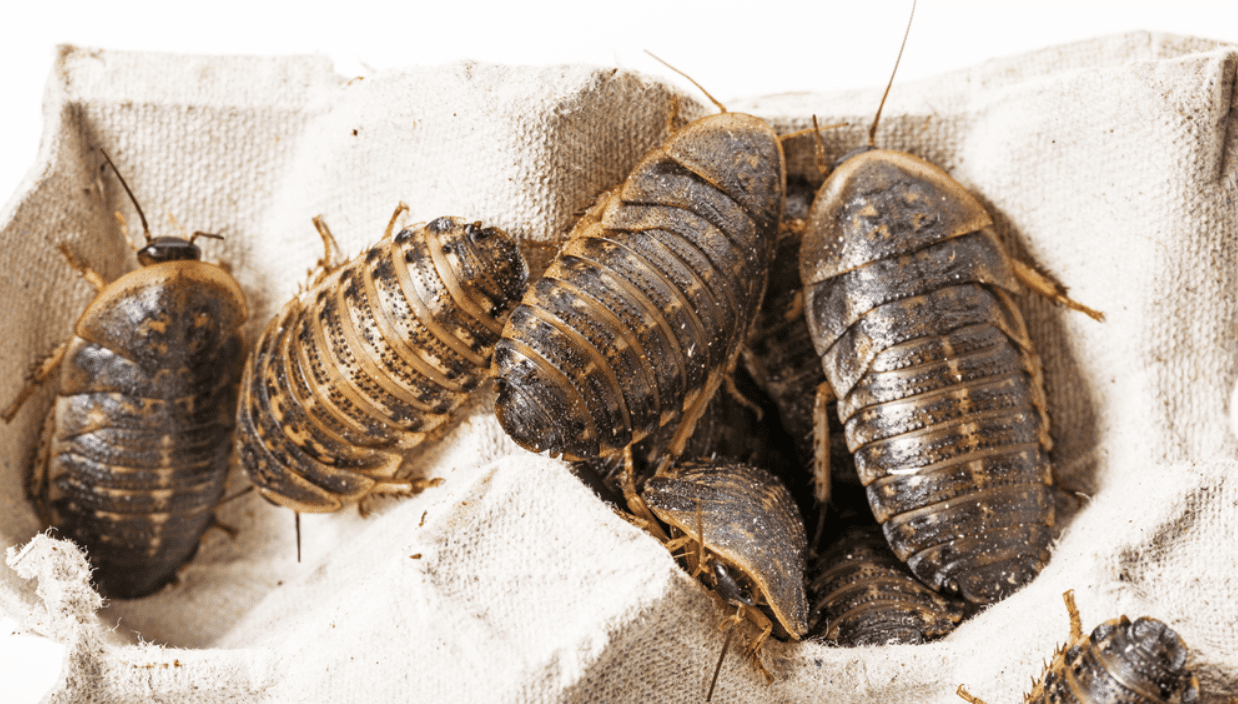Before you can develop a colony and begin production, you must first learn how to identify the age and sex of Dubia roaches.
Due to various factors, Dubia roaches are among the most liked feeder species. They are nutrient-dense, have a delicate exoskeleton, and do not stink like crickets or other roaches. Additionally, Dubia roaches vary in size from ⅛ to 2 inches. This is some of the reasons why pet owners purchase Dubia roaches as feeders. However, having a dubia roach colony may allow you to feed nearly any size insectivore, whether it is an amphibian, reptile, or arachnid!
Accommodations
Dubia roaches may be produced in almost any container, with enough space to stretch and not trample on one another. While the majority of breeders choose big Rubbermaid containers, some choose glass terrariums. Most notably, you need to keep the roaches in a dark area that receives just a little sunlight. Translucent habitats, such as a glass terrarium, need to have enough hiding areas to avoid the sun.
Many breeders choose an opaque-colored plastic container. If you have kids or other animals, you need to secure the container with a lid. However, Dubia roaches are bad climbers and lack the ability to navigate using their legs. Therefore, if your jar is in a dimly lit room devoid of sun, other pets (cats, dogs), or kids, you need not worry about a lid. Since roaches may climb wood and stone, it is advisable to avoid those materials to build the container. The favorable material for the container is glass or plastic.
Temperature and Humidity
Dubia roaches like a warm, humid environment! They are a tropical species that grow naturally in several Caribbean islands. As such, they need a minimum temperature of 85 degrees Fahrenheit. To achieve these temperatures reliably, you may need to buy a heating pad and attach it to the bottom of the container. Dubia roaches can not reproduce efficiently below this temperature. But remember, if the temperature rises, you may need to apply moisture to maintain a constant humidity level.
Dubia roaches prefer a humidity level of about 60%. If the level in the jar is below that, you will need to use a humidifier to maintain a healthy atmosphere. At lower humidity levels, Dubia roaches may be unable to molt correctly, and it also causes the formation of potential allergic dust.
Substrates and Hideouts
Although these roaches may still be raised without the need for a substrate, a proper substrate can improve the colony’s health and efficiency. Typically, roach breeders use saturated coconut fibers. This means that the humidity level remains reasonably high. Take caution not to use some cedar wood, which is poisonous.
Additionally, your roaches would need a suitable hiding spot. The traditional alternative is egg cartons, which you can get for free by saving from the egg you purchase. The cartons have sufficient space for several roaches to conceal themselves. By stacking them slightly overlapped, you can create a considerable egg carton frame that will provide more space for the roaches to spread out. Besides, the material used to make the carton is excellent at preserving moisture and will aid the roaches in molting adequately. You can make a hideout for your roaches using toilet paper tubes, cardboard, or almost any form of cardboard waste.
Compared to other roaches, Dubia roaches are more fruit-oriented. They like nearly all types of fruits, including apples, cherries, bananas, and oranges. They also consume a variety of veggies like avocados and leafy greens. You should enrich their nutrition with protein by feeding them grain-based, cat, or dog food. If the females are not conceiving, this is an excellent way to provide them with sufficient nutrition to produce eggs.
Solving the Dubia Roach Colony’s Issues
After about one month, if you have followed the above advice, you can see baby nymph roaches. The nymphs are about ⅛ an inch in length at birth and are white before their exoskeleton hardens. Females are ovoviviparous, which means they give birth to live nymphs upon storing an egg sac for a month in their abdomen.
After 4-6 months, the nymphs will have completed approximately seven molts and will become sexually active individuals. These adult roaches may be about 1 ½ inch in length and will live about a year and a half, developing new offspring.
If you have not seen any babies after one month, there are some critical issues with your colony that you should examine. Check the humidity, temperature, and lighting levels first. Dubia roaches require temperatures greater than 85 degrees Fahrenheit, a humidity level greater than 60%, and a 12-h light cycle. While the light cycle is essential, it is also critical that roaches have more than enough hiding places throughout the daylight. If neither of these solutions succeeds, consider providing a broader range of food to your roaches, as they might be suffering from a nutritional deficit that prevents them from reproducing.
Conclusion
With a little time, persistence, and an initial investment of resources, you will soon have an ample supply of nutrient-dense feeders for your pets. The horrors of getting dead feeders inside the package can be a distant memory, and you can even earn some extra money by selling your roaches to neighbors and other keepers. By following the directions in this article you will have no difficulty maintaining a safe colony of Dubia roaches to feed exotic pets.







